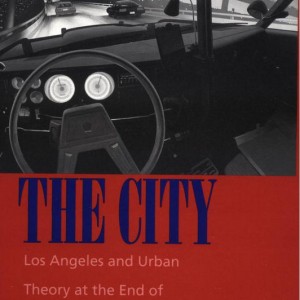
Authors: Allen Scott, Edward Soja
Date: January 1, 1996
Project: [wpv-post-link id=”$project”]
Los Angeles, growing from a scattered collection of towns and villages to one of the largest megacities in the world during the twentieth century, has inspired as much controversy among critics and scholars as among its residents. Is it an urban utopia, the culmination of the American Dream, or is it a nightmare “Hell town” swollen to gargantuan proportions? The editors of The City have assembled a generous variety of essays on these and other questions, focusing on the social and spatial construction of the Southern California metropolis.
Experts in urban planning, architecture, and sociology examine the built environment and the dynamics of this extraordinary modern city, emphasizing the dramatic changes that have occurred since 1960. During this period, which has been marked by the two most disruptive urban insurrections in twentieth-century America, what many view as a “restructuring” of Los Angeles has taken place. Authors employ case studies, empirical vignettes, historical-geographical illustration, and explicit theoretical confrontation to explore such issues as race relations, economics, transportation, and politics.
Unlike the industrial cities developed during the early half of the twentieth century, Los Angeles has enormously flexible production sectors, including financial and business services, high-technology industry, and various craft, fashion, and cultural industries such as jewelry, clothing, motion pictures, and music. Earlier industrial cities in the United States have been characterized as having a dominant and relatively affluent blue-collar working class. Los Angeles consists largely of two distinctive segments: an upper tier of highly paid managers, professionals, and technicians and a lower tier of low skill, low wage workers, the vast majority of whom are Asian and Latin American immigrants, many undocumented.
The problems confronting Los Angeles suggest that this is a particularly revealing place from which to examine and interpret global phenomena of urbanization and regional development. Each author expresses his or her distinctive approach to understanding Los Angeles yet a series of overlapping themes emerges. The result is a new kind of urban analysis, one that is open to diversity but strongly committed to collective theoretical and practical understanding. The City will interest everyone concerned about contemporary urban problems and multidisciplinary approaches to solving them.
Allen J. Scott is professor of geography and associate dean of the School of Public Policy and Social Research at the University of California, Los Angeles. Edward W. Soja is professor of urban planning at the School of Public Policy and Social Research at the University of California, Los Angeles.
Contributors: Susan Anderson, Evelyn Blumenberg, Mike Davis, Michael Dear, Margaret FitzSimmons, Robert Gottlieb, Charles Jencks, Harvey Molotch, Paul Ong, Raymond Rocco, Martin Wachs, Richard Weinstein, and Jennifer Wolch.